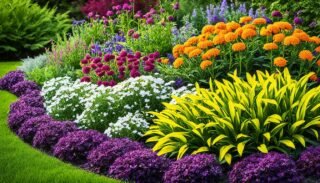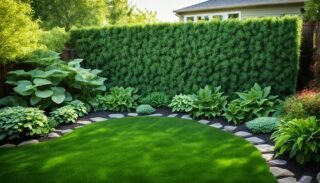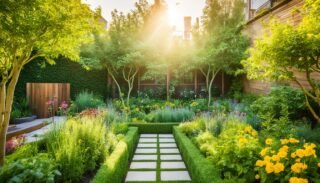Table of Contents
- Why Turning Your Yard into a Bird Haven Matters
- Essential Elements of a Thriving Bird Sanctuary
- Choosing the Right Plants for Your Bird-Friendly Garden
- DIY Bird Feeders: Fun and Functional Projects
- Creating a Backyard Bird Sanctuary: Step-by-Step Guide
- Maintaining Your Sanctuary Through the Seasons
- Attracting Specific Bird Species to Your Yard
- The Do’s and Don’ts of Backyard Bird Watching
- FAQ
- Why should I create a backyard bird sanctuary?
- What are the essential elements of a thriving bird sanctuary?
- How do I choose the right plants for my bird-friendly garden?
- Can I make my own bird feeders?
- How do I plan and implement a backyard bird sanctuary?
- What should I do to maintain my bird sanctuary throughout the year?
- How can I attract specific bird species to my yard?
- What are some best practices for backyard bird watching?
Have you ever thought about making your backyard a place where birds love to visit? Creating a bird sanctuary in your backyard is a way to connect with nature every day. It brings joy and a sense of connection to the world around us.
You don’t need a big yard or special knowledge to make a bird-friendly space. With a few simple steps, you can turn your outdoor area into a place where birds will gather. Things like water, food, and shelter are key to making a bird sanctuary.
Having a bird sanctuary in your backyard does more than just let you watch birds. It helps support nature and conservation. Plus, the sounds of birds and their beautiful colors make your yard a living masterpiece.
Key Takeaways
- Transform your backyard into a bird-friendly oasis
- Provide water, food, and shelter to attract diverse bird species
- Contribute to local biodiversity and conservation efforts
- Enjoy daily doses of nature’s beauty and birdsong
- Create a living ecosystem in your own outdoor space
- Learn about local bird species and their behaviors
Why Turning Your Yard into a Bird Haven Matters
Creating a bird sanctuary in my backyard is more than a hobby. It’s a way to support bird conservation and help local ecosystems. By offering a safe place for birds, I’m helping to protect wildlife in my area.
Turning your yard into a bird-friendly space has many benefits. Birds eat insects, pollinate plants, and spread seeds. This keeps our environment healthy. Watching birds in my garden shows me how important they are for nature.
Here are some reasons why backyard bird sanctuaries are important:
- They provide essential resources for migratory birds
- They create stepping stones between larger wildlife habitats
- They offer safe spaces for birds to nest and raise their young
Watching the birds in my yard brings me great joy. It’s a way to connect with nature from home. Seeing birds can reduce stress and make me feel better. By making my yard a bird sanctuary, I help wildlife and myself.
Essential Elements of a Thriving Bird Sanctuary
Creating a bird sanctuary in my backyard has been rewarding. I’ve learned that three key elements are crucial: water, food, and shelter. Let’s see how to set up these essentials to draw in different birds.
Water Sources
Bird baths are a good start, but birds prefer variety. I added a small fountain and a shallow stream to my yard. These moving water sources bring in more birds and keep the water clean. Always clean your bird baths often to stop algae from growing.
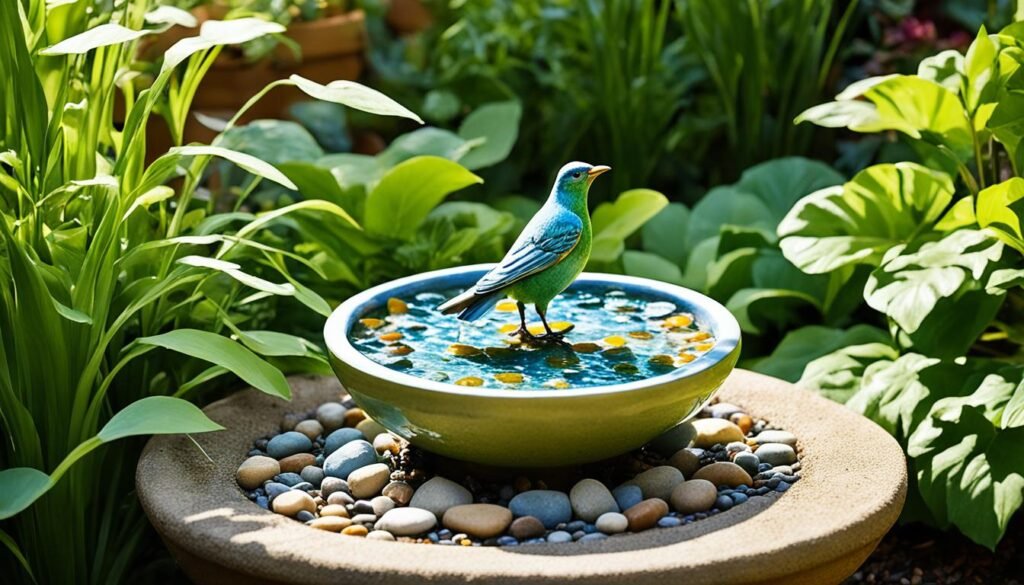
Food Variety
Bird feeders are key, but don’t just use basic seed mixes. I offer a variety of foods to draw in different birds:
- Suet cakes for woodpeckers
- Nectar for hummingbirds
- Fruit for orioles
- Nyjer seeds for finches
I also planted native plants that produce berries and seeds. This gives birds natural food all year.
Shelter Options
Birds need safe spots to rest and nest. I’ve added both natural and man-made shelters. Dense shrubs and trees offer cover, while nesting boxes give homes to cavity-nesting birds. I put different nesting boxes at various heights for different species.
With these elements, my backyard is a lively place for birds. It’s great to see my yard filled with birds all year.
Choosing the Right Plants for Your Bird-Friendly Garden
Choosing the right plants is crucial for a bird sanctuary. Native plants are perfect for attracting local birds. They fit your area’s climate and offer food that birds are used to.
Berry-producing shrubs are essential for a bird-friendly garden. Birds enjoy berries, especially in fall and winter when food is hard to find. Great options include:
- Elderberry
- Serviceberry
- Viburnum
- Dogwood
Nectar-rich flowers draw in hummingbirds and other birds that love nectar. These flowers work well:
- Trumpet honeysuckle
- Cardinal flower
- Bee balm
- Columbine
Don’t overlook trees! They give birds places to nest and perch. Native oaks, maples, and conifers are great picks. Mixing these plants makes your garden welcoming for many birds.
DIY Bird Feeders: Fun and Functional Projects
I love making my own bird feeders. It’s a fun way to bring birds to my yard and be eco-friendly. Let’s check out some cool bird feeder crafts you can do at home.
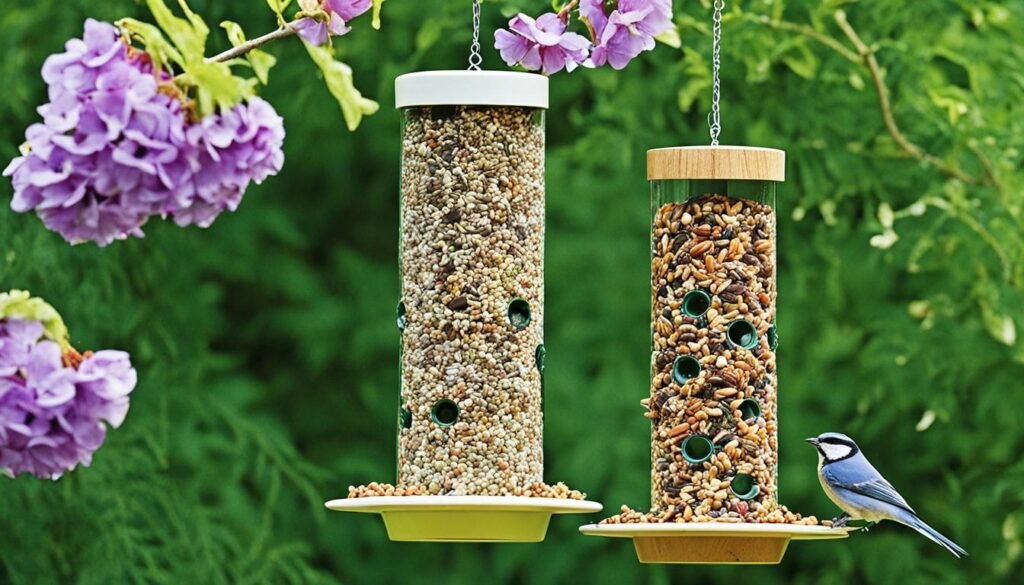
Upcycled Container Feeders
Old items can become great bird feeders. I turned an old milk jug into one by cutting holes and adding perches. Another project was a tin can feeder. I painted it, added drainage holes, and hung it with a string.
Natural Material Feeders
Nature is full of materials for bird feeders. Making pine cone feeders is easy. I spread peanut butter on the cones, rolled them in seed, and hung them up. For something more rustic, I used a small log. I hollowed it out, added perches, and filled it with seeds.
Platform Feeders for Ground-Feeding Birds
Some birds like to eat from the ground. I made a platform feeder from a wooden picture frame. I covered it with hardware cloth, added a rim, and put it on a post. It’s great for attracting ground-feeding birds.
Making bird feeders at home is rewarding. It saves money, is fun, and helps birds. Try these projects and see your backyard fill with birds!
Creating a Backyard Bird Sanctuary: Step-by-Step Guide
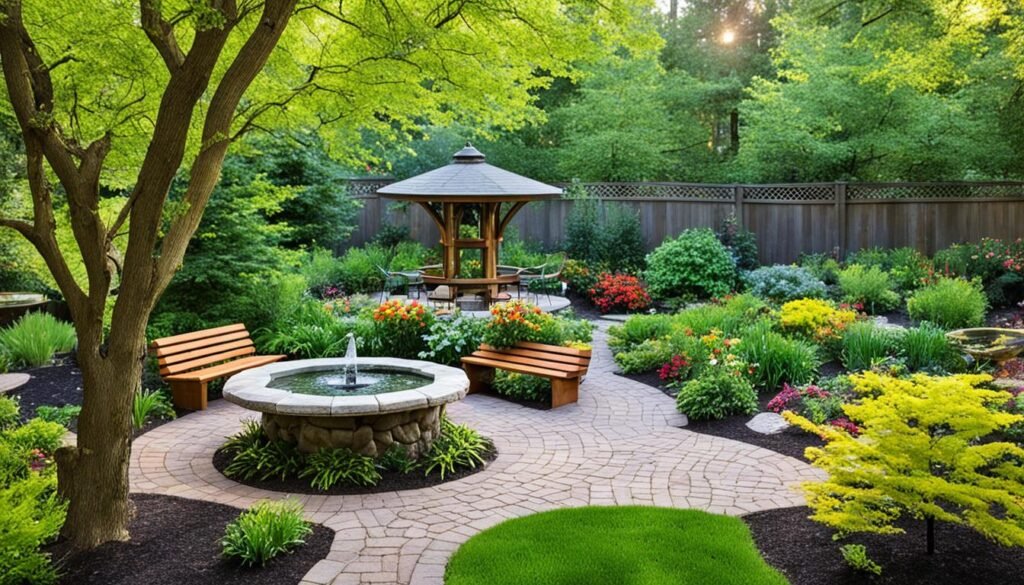
I’m excited to share my step-by-step guide for creating a backyard bird sanctuary. First, I look at my yard’s current state. I check the trees, shrubs, and open areas. This helps me plan my bird-friendly yard layout.
Next, I focus on landscaping for birds. I pick native plants that offer food and shelter. Berry-producing shrubs, seed-bearing flowers, and dense evergreens are perfect. I aim for a mix of heights and textures in my design.
Water is key in a bird sanctuary. I add a birdbath or small pond. Moving water draws in more birds, so I think about a fountain or dripper. I put these water sources near places that protect the birds.
For food, I set up different feeders. Tube feeders, platform feeders, and suet cages attract various birds. I spread these out to lessen competition and create more spots for feeding.
Shelter is the last part of my bird-friendly yard plan. I hang nest boxes and create brush piles. These give birds places to nest and hide from predators. I also keep some areas of my yard a bit messy with leaves and twigs.
Building a bird sanctuary takes time. I start small and grow my efforts over time. With patience and care, my backyard becomes a lively spot for birds.
Maintaining Your Sanctuary Through the Seasons
Seasonal bird care is crucial for a thriving backyard sanctuary. Let’s see how to adjust our bird-friendly spaces as seasons change.
Spring Cleaning and Nest Box Preparation
In spring, I clean out old nesting materials and disinfect birdhouses. This stops parasites and diseases. I also fix any damage to make sure birds have safe places to nest.
Summer Hydration Strategies
Summer heat means birds need more water. I put shallow dishes or birdbaths in the shade. Keeping these water sources clean and full is key for bird care in the summer.
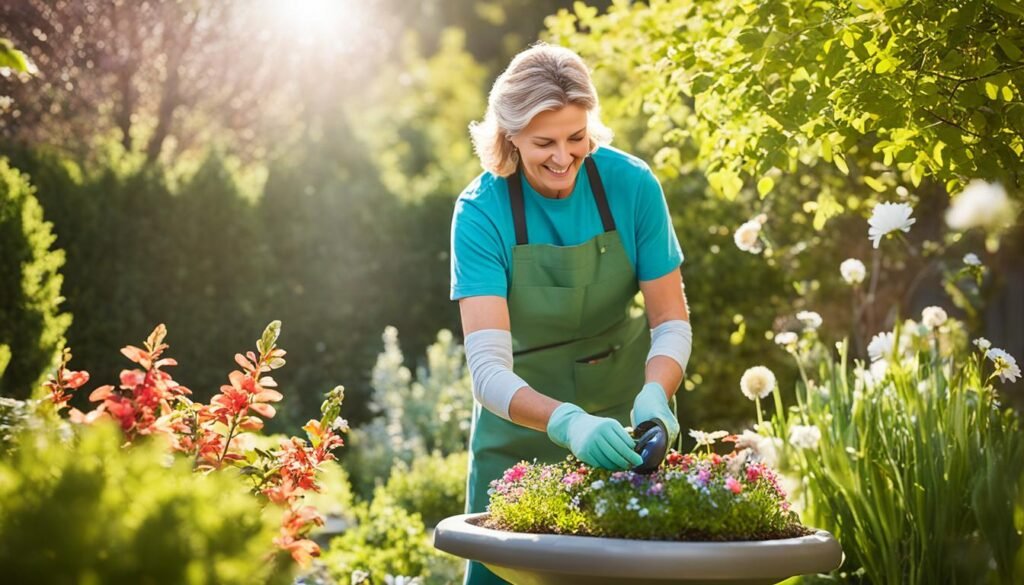
Fall Migration Support
Fall brings migrating birds. I change my feeders to offer high-energy foods like sunflower seeds and suet. These foods help birds get ready for their long journeys. Native plants with berries also offer natural food.
Winter Feeding and Protection
Winter is when feeding birds all year is most important. I increase the food and offer different types. Foods high in fat like peanuts and suet help birds stay warm. I also provide shelter from the cold with evergreens or roosting boxes.
By changing my care routine with the seasons, my backyard stays a welcoming place for birds all year. This ongoing care is key to a successful bird sanctuary.
Attracting Specific Bird Species to Your Yard
Understanding what different birds like is crucial for a great backyard. By making your yard welcoming to specific birds, you can draw in many kinds of birds.
Start by learning about the birds in your area. This helps you pick the right plants and feeders. Here are some tips for attracting common birds in North America:
- Cardinals love sunflower seeds and dense shrubs
- Hummingbirds are drawn to red tubular flowers and sugar water feeders
- Bluebirds prefer open areas with nesting boxes
- Woodpeckers are attracted to suet feeders and dead tree limbs
For colorful birds, plant flowers that have lots of nectar. Rare birds need special places to live, so try to create those in your yard. Be patient, as it might take time for birds to find your yard. But once they do, you’ll have a busy and interesting backyard.
The Do’s and Don’ts of Backyard Bird Watching
I enjoy watching birds in my backyard. It’s a hobby that brings nature close to me. But, it’s key to follow bird watching etiquette. Let’s look at some important practices for responsible bird watching.
Ethical Observation Practices
When I watch birds, I keep my distance. I use binoculars for a closer look without bothering them. I never touch or feed wild birds by hand. It’s important to let them act naturally in their space.
Photography Tips for Backyard Birders
Photographing backyard birds can be challenging. I use a long lens to capture images from afar. I avoid flash, as it can scare birds. Being patient is crucial – I set up my camera and wait for the perfect shot. This way, I get great photos without stressing the birds.
Keeping a Bird Journal
I keep a bird journal to track my sightings. It helps with identifying birds and seeing patterns over time. I note the date, time, and species I see. I also write down any interesting behaviors. This practice has really improved my bird watching skills and knowledge.





